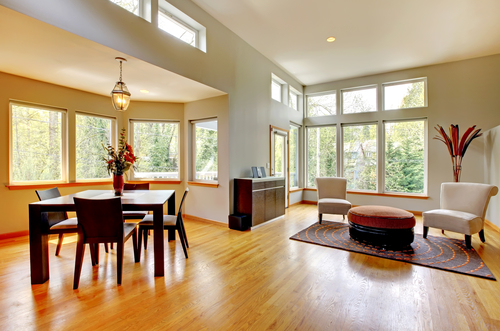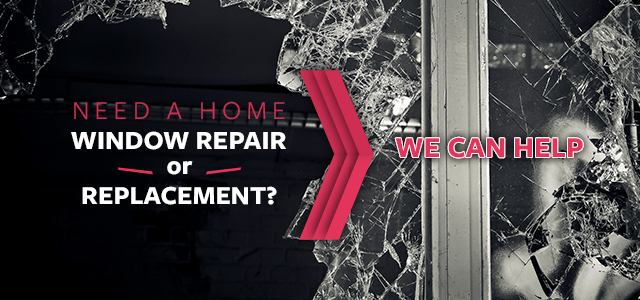Window treatments are technically any kind of interior decorating element placed around your Simonton windows that enhance your room’s aesthetics. Window shades and curtains are great window treatment options for most rooms in your home whereas drapery and/or a decorative window valence often works best in living rooms.
Stained glass can also be a wonderful addition to a room that you spend a lot of time in. When natural light hits stained glass the effect is often magical. Below are a few more window treatment ideas, some of which may be familiar (e.g., Venetian blinds) and others you might not have considered before for your home (e.g., roman shades).
Simonton Windows Add Style
Roman Shades

Roman shades are a kind of solid colored window covering that allows you to block out the sun. That gives you the flexibility and choice of deciding whether you want to let in natural light and, if so, how much.
From an aesthetic standpoint, the advantage of putting roman shades in your den, family room, or living room is that roman shades are usually one solid color, made out of fabric, and have a smooth appearance.
Roman shades, which you might think of as horizontal drapes though thinner than drapes, are also very easy to bring up or down since most roman shades are opened with a cord, the same way as you open your regular blinds.
Window Shutters
Window shutters have a welcoming, even rustic, appearance that tends to work well in kitchens and laundry rooms. Aside from their tidy appearance, window shutters offer almost unparalleled energy efficiency and a fair amount of privacy. Window shutters can dramatically reduce heat gain in the sweltering summer months and can fasten directly to the window trim or window jams for a snug fit that looks really wonderful.
Drapes
Drapes and curtains are known in the interior design world as soft treatments because they’re, naturally enough made out of softer materials. The difference between drapes and curtains is that drapes are designed to flow all the way down to the floor whereas curtains are typically designed to more precisely fit your window opening.
That said, both are elegant additions to any room, and each offers energy efficiency, privacy, and aesthetic advantages. Some rooms actually work best when darkened most of the time – e.g., dens and TV rooms. If your home or condo has a single glazed (single pane) piece of glass, then there’s a good chance that you’re not optimizing your energy efficiency.
Until you schedule to have new, more energy-efficient windows installed, putting up drapes might be a very worthwhile option worth considering. Some of the fabrics used for making drapes can lend a touch of elegance and splash of color to a space that would otherwise need something to make it pop. There’s a reason that drapes have been around so long.
Venetian (Louvered) Blinds
The marquee benefit of Venetian blinds are the louvers that allow you to let in more or less light without the need to lift the shade. You can achieve the exact feel that you’re going for in each room that way.
Modern types of Venetian blinds are made to repel dust and can come in really attractive styles made out of wood, metal (e.g., aluminum), or plastic. An increasingly popular choice is a composite wood that combines wood and an extremely durable plastic known as PVC.
Ultimately, whether you choose shades, shutters, drapes, or blinds will depend on your unique sensibility and what you’re looking to get out of a window treatment. Contact us for more insightful tips.

